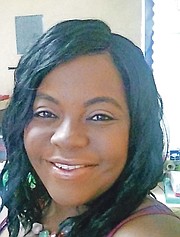By YAN SMITH
If you happened to be passing by Rawson Square on the night of Tuesday, April 2, you may have seen an unusual sight. The House of Assembly was glowing with blue lights. The office of the Prime Minister was lit up with blue lights as well.
As a matter of fact, all over the world, homes, cars and buildings – from small businesses to the White House in Washington, DC, – were glowing with blue lights on April 2.
What was the significance of these blue lights?
The blue lights are associated with Autism Awareness Day, which is observed every year on April 2. “Light It Up Blue”, as the initiative is called, is intended to raise international awareness of autism.
On December 18, 2007, the United Nations (UN) designated April 2 as World Autism Awareness Day. It was then observed for the first time in 2008.
Since then, every year on this day many exhibitions, events and activities are organised by various schools, groups and government sectors in honour of the occasion.
This year’s “Light It Up Blue” ceremony was a spectacular one here in Nassau. There were many parents, teachers and government officials in attendance. Hope was awakening as land and more subsidisations for more programmes and resources for special needs were promised by the Prime Minister.
Although the blue lights illuminates the world for that one night, it is not the only symbol that represents autism awareness. For instance, the ribbon was adopted in 1999 as the universal sign of autism awareness. It is the trademark of the Autism Society. The multi-coloured brightness of the ribbon represents hope.
Additionally, the puzzle pattern is by far the most recognisable and at times, controversial symbol of autism awareness. What exactly does the puzzle piece stand for? According to AutismWiki.com, the puzzle piece logo was first used in 1963 by the National Autistic Society. It was made more famous by Autism Speaks, the international autism advocacy group. The puzzle pattern represents the complexity of the autism spectrum. The different colours and shapes represent the diversity of the people living with the condition. As with any initiative, there are fans and critics. Some people in the autistic community oppose the puzzle piece. They argue that it paints a demeaning, depressing view of autism, only focusing on neurotypicals and misunderstandings.
While this may be a compelling argument, most people in the autistic community fully embrace the puzzle piece. Similar to the ribbon logo, the bright colours of the puzzle represent hope and diversity. Even though it also reflects the complexity of autism spectrum disorder, it signals optimism of a better future to those affected by the condition. A survey was conducted by the Autism Society asking individuals with autism what the puzzle piece meant to them.
Some responses included: “I am part of the great puzzle of life”; “(People) see the puzzle piece and think about autism and that’s the point”; and “Even though we’re all different, we all are needed.”
Personally, I embrace the puzzle piece. A puzzle consists of different shapes and coloured pieces that, when put together, create a beautiful picture. Sure, there is still a lot of confusion surrounding autism and related challenges. However, if we all become part of the global puzzle we will begin to see the true picture of what autism is.
One quote by a woman with autism beautifully sums it up. She said: “I think the puzzle piece symbol is all about us – parents, families, friends, medical professionals, educators, researchers, et cetera.” This is true to its core.
Autism affects all of us in some way. I challenge you to become more knowledgeable about what this condition is about, then begin to spread awareness about it. Do your part to piece together this beautiful picture. We are all part of the puzzle!
• For workshop inquiries or training sessions, feel free to contact 552-5909/323-2252, or e-mail tutoringtherapy@gmail.com and check out Facebook: Therapy Learning Centre.





Comments
Use the comment form below to begin a discussion about this content.
Sign in to comment
Or login with:
OpenID